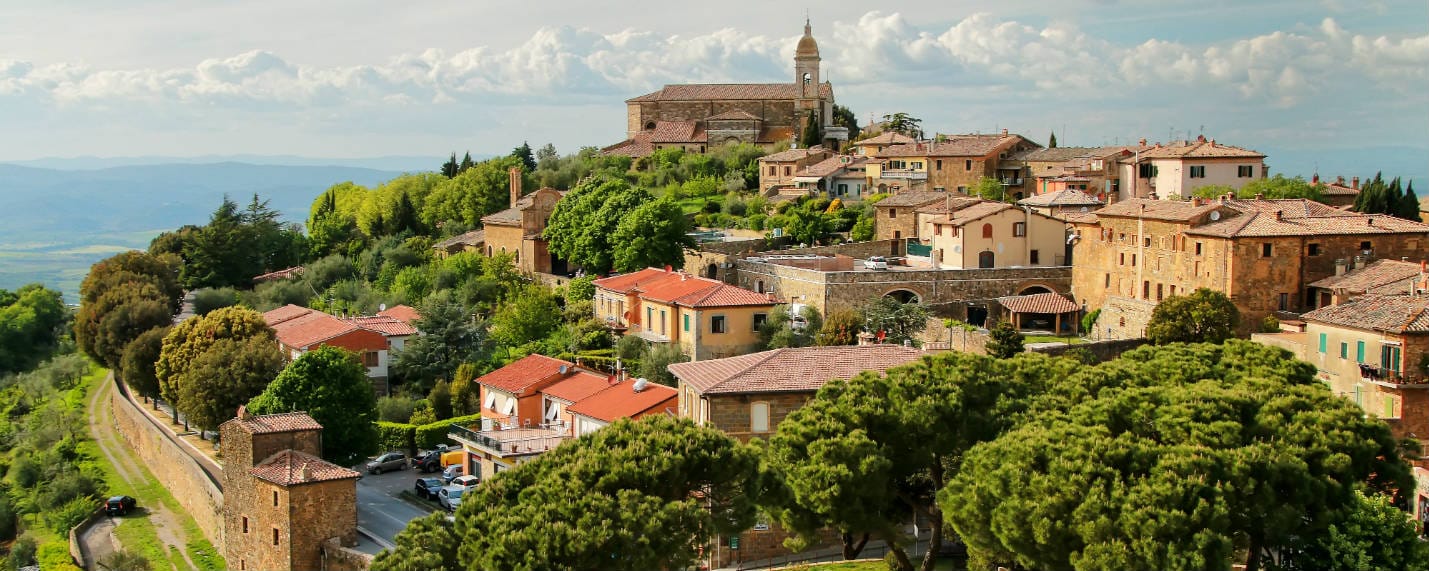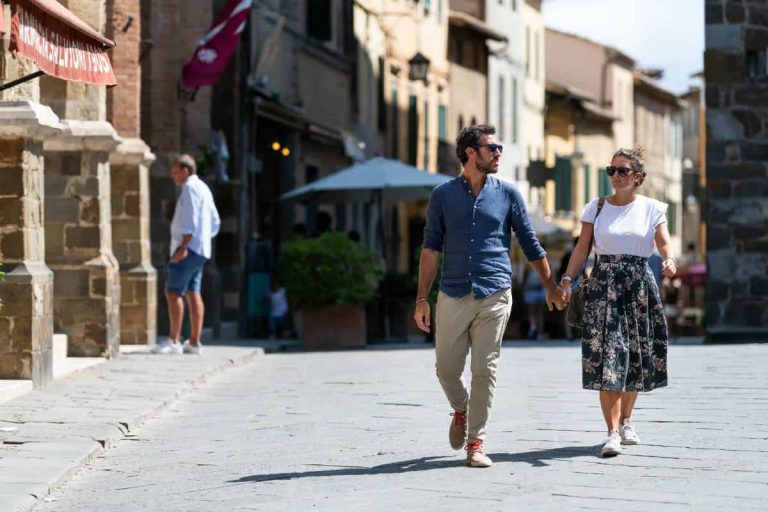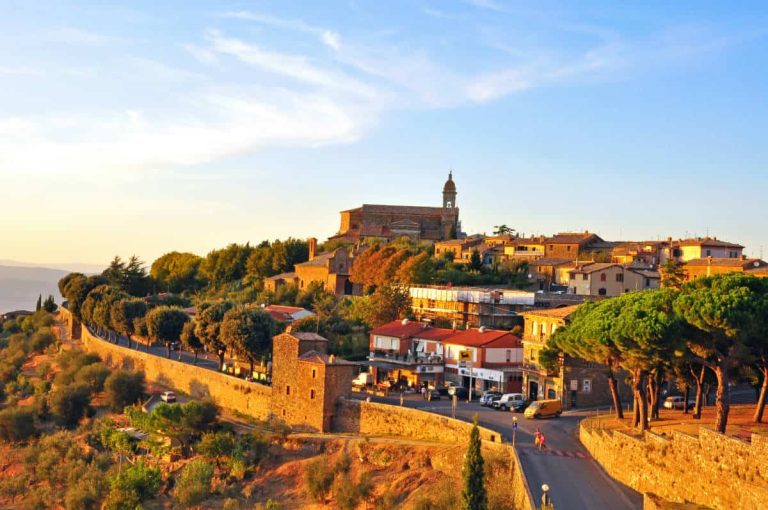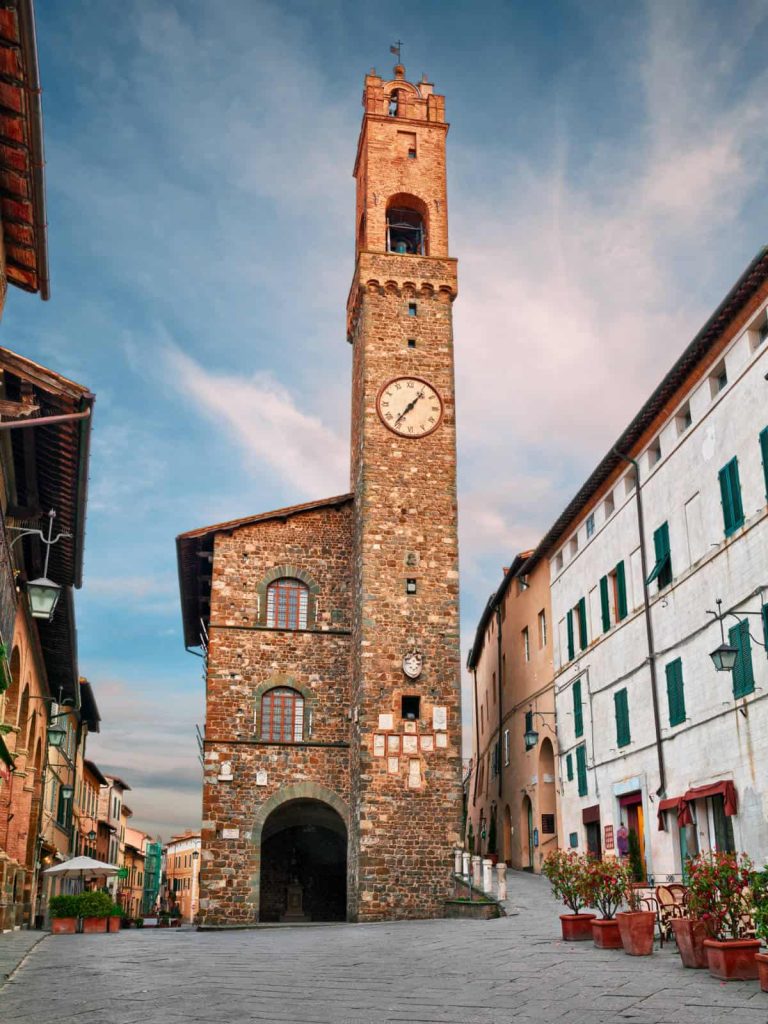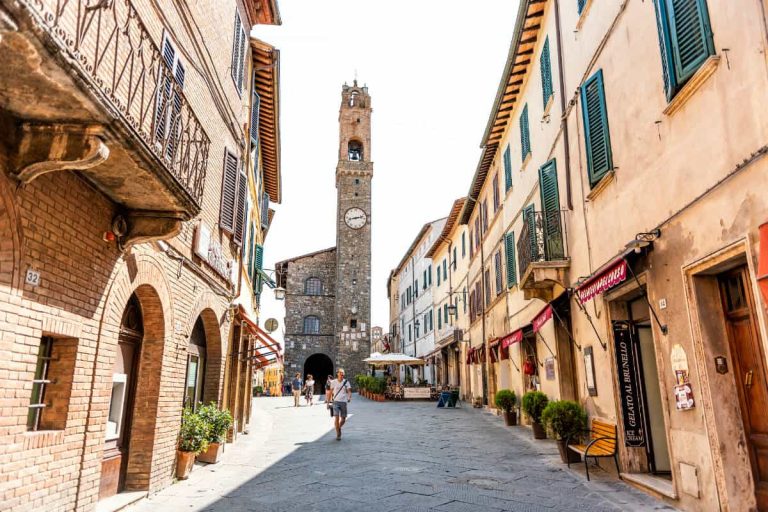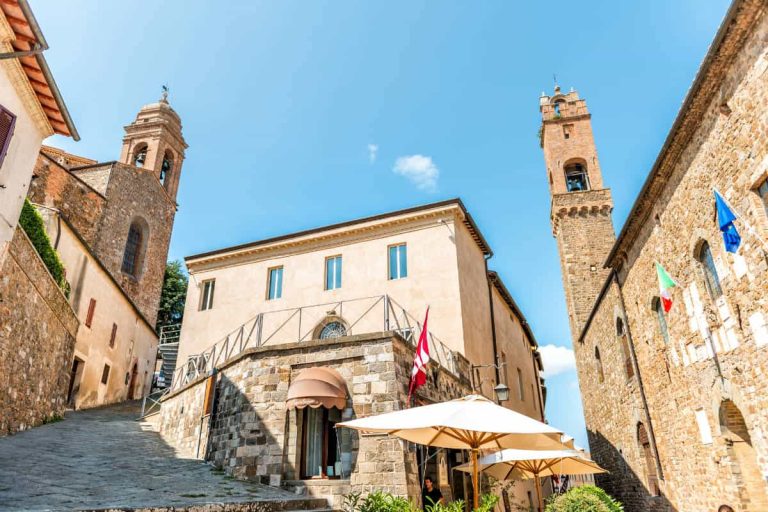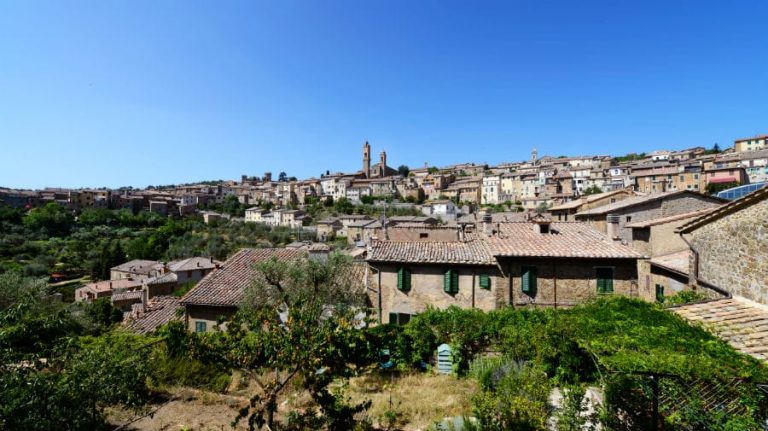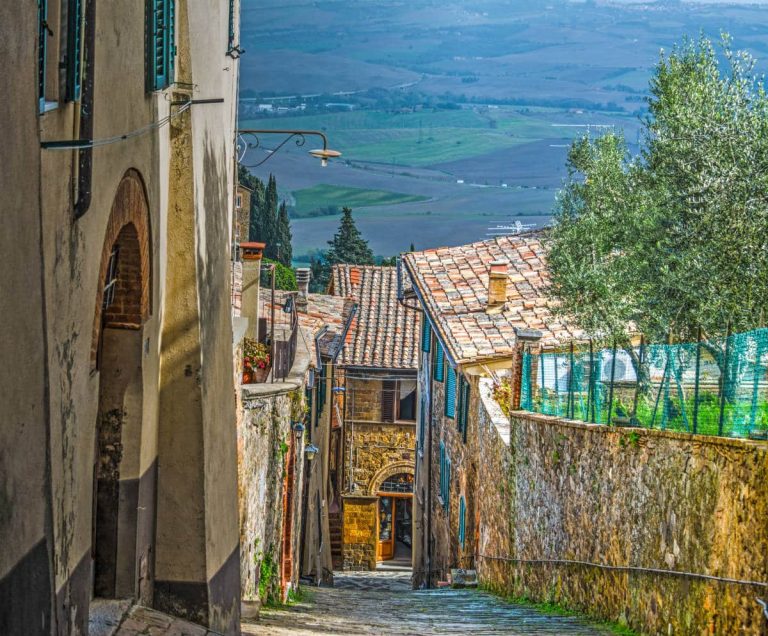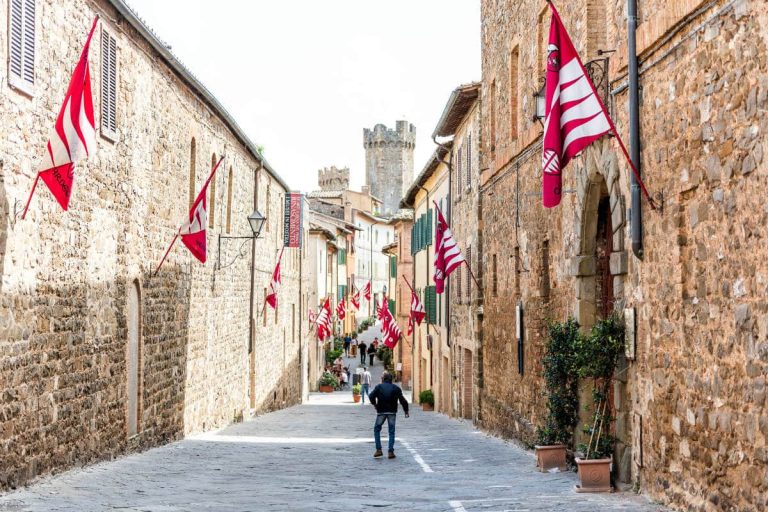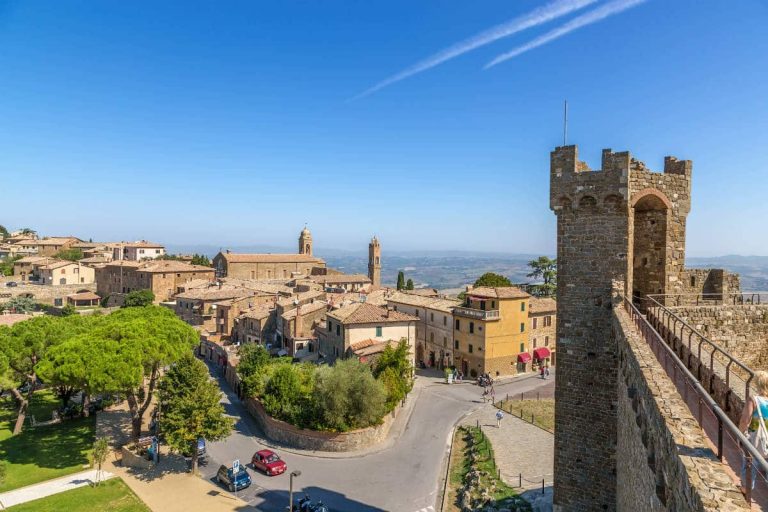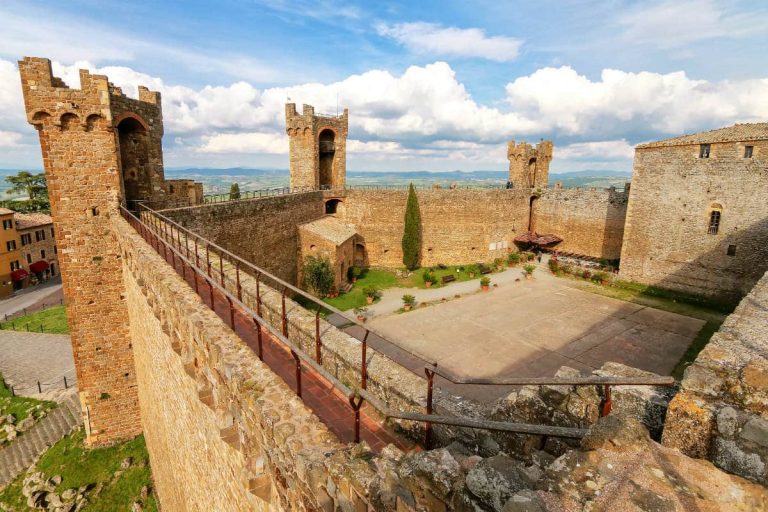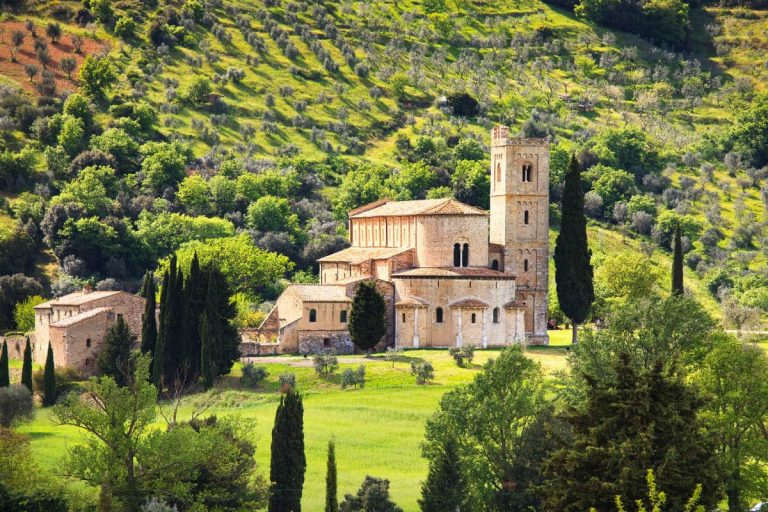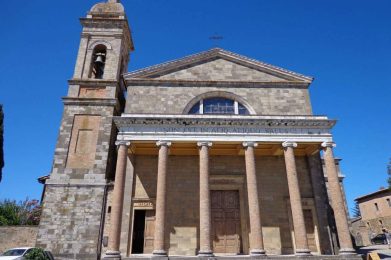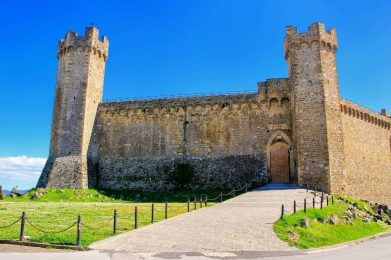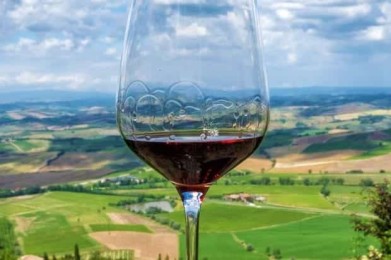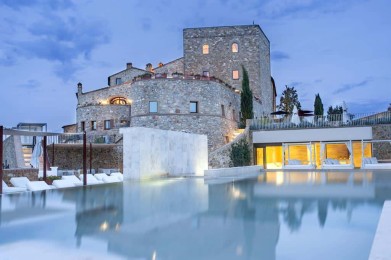Located south of Siena, Montalcino is a charming medieval village of extraordinary beauty, known for the fine wine production of Brunello di Montalcino and Rosso di Montalcino. This historic village, privileged in the beautiful landscape of the Val'Orcia Natural Park, seems to belong to a suspended time, so well preserved in its medieval features.
The historic beauty of Montalcino
Heading towards Montalcino, one is immediately captivated by the powerful city walls and the authentic castle, a witness to an intriguing past. Virtually untouched since the 16th century, Montalcino captivates with its winding country roads, hills full of ancient oaks, picturesque olive trees and vineyards crisscrossed by lonely cypress trees.
Within the village, the main attraction is undoubtedly the Rocca, a fortress dating back to 1361 that dominates the historic center and offers spectacular views of a panorama that stretches from Mount Amiata to the expanses of the Maremma, crossing the Val d'Orcia and lapping at the Crete Senesi. Equally fascinating is the Piazza del Popolo with its Palazzo dei Priori, seat of the town hall, and its elegant Gothic loggia. Other places to visit include the Bishop's Palace, the Cathedral of the Holy Savior, and the churches of St. Augustine, St. Egidio, and St. Francis.
Montalcino: Cradle of Brunello
Brunello di Montalcino, one of the most fascinating wines on the Italian scene and among the most appreciated in the world, finds its place of origin here. Ferruccio Biondi Santi in 1888 refined the formula for Brunello, using only Sangiovese grapes, thus transforming Montalcino into an international wine benchmark. Notable wine producers include Biondi-Santi, Schidione and Banfi.
Brunello, loaded with flavor and history, represents an unforgettable gastronomic experience, but it does not stop there. Montalcino is also known for its rich artistic and cultural offerings, with major events such as the Jazz & Wine Festival, where jazz and wine tastings combine in a sinuous sensory embrace.
In addition, Montalcino boasts no less than two must-see museums: the Museo Civico e Diocesano di Arte Sacra, enriched by religious paintings and sculptures, and the Museo del Vetro, which traces the history of glassmaking from the Egyptians to the masters of Venice.
A village to explore
A tour through the narrow streets of Montalcino is not only a historical and artistic experience, but also a fun journey to discover local flavor. The borgo offers a wide selection of arts and crafts stores, cafes, restaurants and wine bars available for those who wish to fully immerse themselves in the lively atmosphere of the place. And for those who wish to take a piece of Montalcino with them, the local wineries will welcome you with open arms, allowing you to take home a bottle of the superb Brunello.
Montalcino is more than just a village: it is a sensory journey that combines history, natural beauty, culture and enology like no other place in Italy. An experience worth living at least once in a lifetime.

